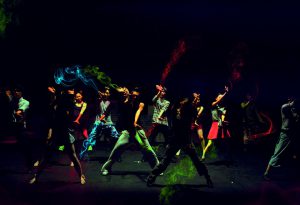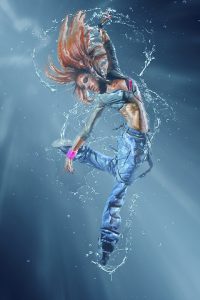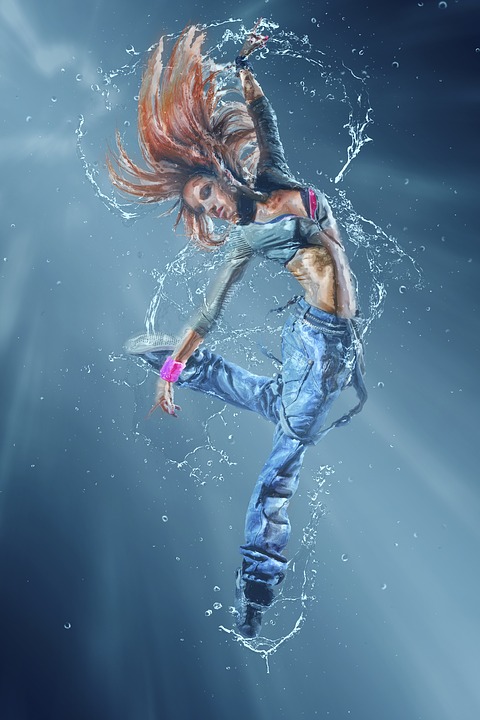 What Are Creative Dance Arts?
What Are Creative Dance Arts?
Creative dance arts is not a formal dance form like ballet, modern or hip hop, it is just a natural way of moving and expressing ourselves.
If you think about it, from the moment of birth to the very last breath that we make, we all have the need to move in order to function. We also need to move to express ourselves and communicate with others. How a person moves in his or her everyday activities is an expression and manifestation of who they are. That flow of movement through one’s life is known as one’s own personal ‘dance of life.’
Of all the arts, dance and particularly creative dance arts is suited to individual personalities and individual growth. Creative dance arts help to develop the body, develop the imagination and deepens and refine one’s emotional nature.
Creative dance arts are based on artistic expression and the idea that if you can think, feel and move, then you can dance. You don’t need to be a good dancer to experience creative dance. Creative dance is about movement, developing your own ideas and expressing yourself through movement. Teachers of creative dance classes need to help their students discover their own resources through suggestions and not show them what to do or how to do it.
Many people have never been exposed to creative dance arts, so they are blocked from free harmonious expression by their own self-consciousness.
Why Is Learning Creative Dance So Important In Schools?
By using dance, children can learn more about themselves and what motivates themselves and others. Movement is common to all people, regardless of language and cultural barriers.
Creative dance is uniquely suited to social interaction and healing activities. Creative dance arts provide a vehicle for developing trust and understanding others better. It celebrates the uniqueness and the diversity of humanity. If we are brought up in an environment that does not allow us to express natural aggression, then it gets suppressed, only to come out later in a destructive form, which can lead to violence towards others or yourselves.
Creative dance arts is a vehicle for healing and transformation, especially in deprived youngsters, and encourages dance them to participate in a way that differs from any other vehicle of learning.
Aims and Outcomes From Learning Creative Dance Arts
Creative dance must aim to integrate the physical (body), intellect (mind), emotions (feelings) and spiritual aspects to produce a well balanced and adjusted individual.
Creative dance arts needs to develop the innate human potential for creative expression that is everyone’s birthright.
Dance should develop the body as an instrument for communication and expression of one’s feelings.
Dance helps to teach one how to understand your body, care for it, understand posture and to use the body effectively.
Dance teaches one about personal space and shared space, and also about respecting the space of others.
Dance teaches self-control and self-discipline, which are invaluable lessons for life.
Creative dance teaches one about being innovative, experimental and resourceful.
Dance helps to develop self-esteem, as you lose your self-consciousness by trying new and strange things.
Some Basic Examples Of Creative Dance Arts Activities For Teachers To Try
Running as fast as you can and freezing helps to establish control. Practice this many times adding changes of levels and shapes. Add in jumps. Try running backwards without crashing into one another.
Place a hoop a person spaced around the floor. Fun very fast amongst the hoops without touching them. When the music stops, freeze inside a hoop. Next, remove some of the hoops. Run with the hands clasped behind backs and when the music stops release the hands and freeze surrounding the hoop. Then try running backwards without touching each other or the hoops and when the music stops freeze inside the hoop. If any part of the body is outside the hoop they sit out. There may be more than once person in a hoop.
Each person takes a hoop and uses it as an extension of their bodies. See how many ways you can get them to move with the hoop.
Work in groups and make shapes with your bodies and the hoops. Now move into another shape staying together.
Explore everyday activities such as swinging, jumping, stretching, twisting, reaching, swaying, shaking and collapsing. Provide a rhythm with a percussive instrument and call out words and let each pupil experiment with each action.
Now let them work out a sequence using four of these words in groups.
Sound out names and find a simple movement of pattern to express the name. For example, Steven could be sounded out as Steeeee vin with a long stretching movement followed by a short staccato one. This is a great way for everyone to learn the names of their classmates.
Imagine that you are a balloon or plastic bag. As someone blows you up you get bigger and bigger until you pop.
Join one part of the body to another, like your elbow and your knee and find ways in which to travel or make different poses.
Draw figures of eight in the air with different parts of your body.
Stand to face a partner and decide who the leader is. The leader places his or her hands up in front as if on a mirror. The partner places his or her hands on the leader’s hands. The leader briskly and sharply keeps changing the position of his or her hands while the partner tries to keep the hands in contact. After a few minutes swap around.
Work in partners and explore movement while keeping one body part attached to each other at all times.
Explore different types of running and walking. Run as if being chased, then run like you are on a fragile frozen lake. Walk in slow motion. Run in gumboots.
Make a circle. One person runs to the centre and makes a shape. The next person does the same but makes a shape attached to the first person until all are involved. Then keeping the shape try to bounce before returning to the circle.
The teacher plays the drum and the students do movements in time to the rhythm.
Include some basic technique in the class, like how to sit up tall, or how to jump by bending the knees on take off and landing, without twisting the knees. This helps them to protect their bodies and be safe.
Also include some basic stretches at the end of the class in the form of a cool down, as this will also encourage flexibility.
Some Teaching Hints for Teachers
- Alternate noisy and energetic activities with more soothing and quite ones.
- Use an accompaniment to help with structure, like a tambourine, drum or whistle.
- Allow laughter, as it is an expression of enjoyment and a release of tension. If a class becomes too wild, you many need to do some quiet time like lying on backs and closing eyes.
- Make your instructions clear and brief and don’t give too many instructions at once. Use very few words, because if you explain things over and over, children will not listen the first time.
- Create an atmosphere with the use of your voice, body and the music.
- Make sure each student understands your instructions.
- Always finish the class on a positive note.
- Don’t say find a partner, rather say turn to the person closest to you to avoid feelings of rejection.
- If a child is being disruptive, stand next to him or her with your hand gently on their shoulder as you talk to the class.
- Never ridicule or threaten a child, and never show one child up in front of another. Deal with individual discipline problems privately.
- Do not confuse creativity with freedom. Dance class must still be structured. Avoid asking students to dance freely with no guidance or directions, because they become self-conscious if they run out of ideas.


